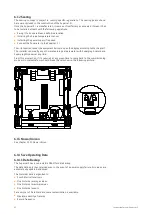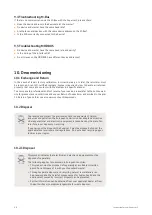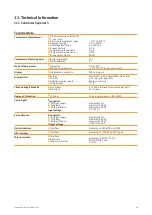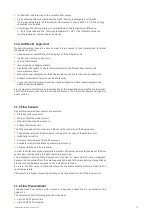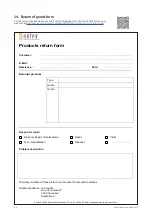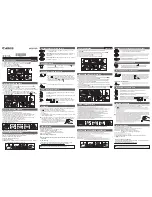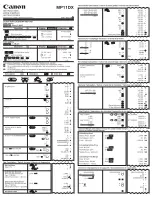
51
Instruction for use | Supercal 5
11.4 Arithmetic Logic Unit
Modern calculators should be able to meet a large number of user-related and technical
requirements, such as
good optical recognizability of the displays of the arithmetic unit
logical and clear menu structure
service friendliness
low costs when changing meters
Flexibility with regard to the technical adaptation of different flow sensors and
temperature sensors
Modularity over equipment with device options such as data inputs and outputs, etc.
Highest measurement accuracy and data security
In general, each calculator should be clearly assigned to a heat measuring point and
easily accessible/readable.
Electromagnetic interference and overheating at the installation site must be avoided at all
costs. All cables must be laid at a minimum distance of 300 mm from power and high-fre-
quency cables.
11.5 Flow Sensors
As possible/common flow sensors are possible:
Vibrating jet flow sensors
Wing and turbine wheel meters
Magnetic-inductive flow sensors
Ultrasonic flow sensors
The following application criteria can influence the selection of the flow sensor:
Type of measurement (heat/cold measuring point, viscosity of the medium, etc.)
Installation situation
Accuracy requirements for the flow sensor
Available inlet/outlet distances (measuring accuracy)
Price/performance ratio in general
In order to achieve the highest possible resolution, the pulse value (output pulses of the flow
sensor per volume passing through) should always be low.
The installation location of the flow sensor (“cold side” or “warm side”) is just as important,
because the conversion from the volume passing through to the mass passing through takes
place at the temperature assigned to the installation location.
As a rule, the flow sensor is installed where the environment temperature is closer to the
room temperature.
This results in a higher measuring accuracy and a longer service life of the flow sensor.
11.6 Flow Measurement
Type-approved flow sensors with a pulse or frequency output can be connected to the
Supercal 5 .
The calculator has the following input pulse values:
up to 999,999 pulses/litre
up to 999,999 litres/pulse
Its flow rate is determined with a suitable flow sensor.
A pair of temperature sensors determines the “Warm pipe temperature” and the
“Cold pipe temperature” of the heat transfer medium. As soon as ΔT > 0,2 K, the energy
consumed is calculated.
Accordingly, the cooling energy is cumulated when the temperature difference
< – 0,2 K is reached and the “cold pipe temperature” < 18°C (the threshold value can
be programmed or customized on demand).






